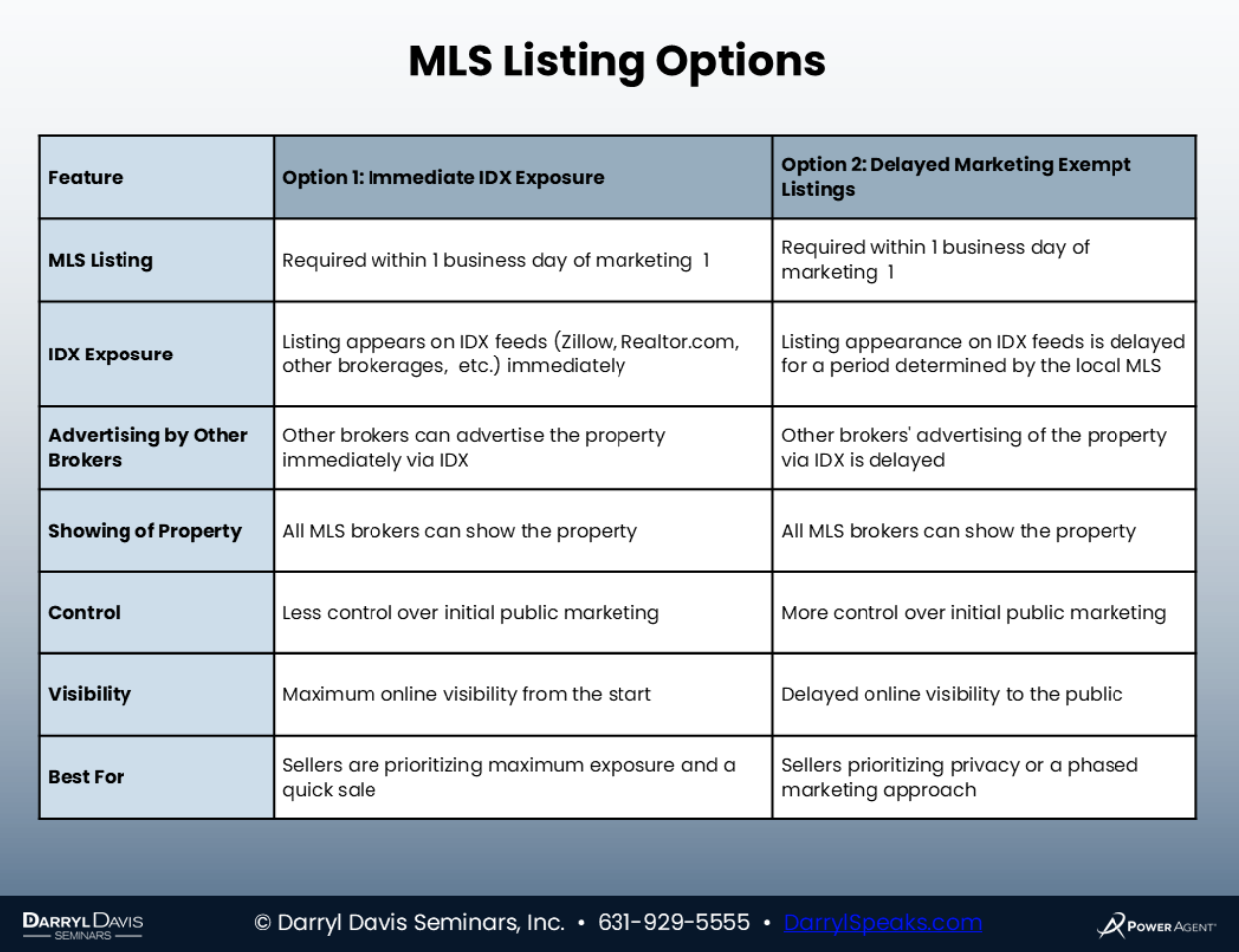Oh, NAR. Here we go again.
Just when real estate agents were finally catching their breath after the commission chaos, courtroom drama and the never-ending Clear Cooperation Policy debates, a brand-new “clarification” drops from on high.
And by “clarification,” we mean confusing new rule that solves nothing.
Introducing the Delayed Marketing Exempt Listing policy: one more MLS form, one more eyebrow-raising seller conversation and one more reason to double-check with legal to make sure you aren’t going to get sued.
Sarcasm aside, let’s break down what this new rule actually is, why it might derail your next listing presentation and how to explain it without sounding like you just graduated from law school.
What the policy actually means (spoiler: not much)
Let’s decode it in plain English:
“This policy lets us list your home in the MLS right away, but delay how soon it appears on public websites like Zillow, Realtor.com and Homes.com. Agents can still see it. They can still show it. The only thing delayed is when the internet finds out.”
That’s it. No fireworks. No privacy forcefield. Just a slight postponement in online visibility.
And because it wouldn’t be a NAR policy without a twist, how long that delay lasts will be different for everyone. That’s right, it’s up to your local MLS. So, if consistency or predictability is your thing, you probably aren’t going to like this.
The real problem: it’s a listing conversation nightmare
Let’s be real: this policy won’t help you win more listings. If anything, it’s more likely to make a seller squint, tilt their head and ask, “Wait—what exactly are you talking about?”
Here’s why this could blow up in your face if you’re not careful:
- You need to explain syndication, IDX feeds and public-facing portals to someone who just wanted to know when the sign goes in the yard.
- There’s yet another disclosure to explain, another form to sign and another potential rabbit hole to fall into.
- If you bring this up too early, you risk confusing the seller—or worse, making them question if you even know what’s going on.
Imagine going to your bank and getting a 20-minute monologue on the difference between a Roth IRA and a traditional IRA when all you asked was, “Can I open a savings account?”
When should you mention it? (hint: not Immediately)
Two golden rules:
-
- Follow your broker’s instructions. Seriously. Every office, MLS and compliance department has its own spin on this. Your broker is your business partner and you have to abide by their policy.
- Don’t bring this up unless you absolutely need to.
Think of this as your “in-case-of-emergency-break-glass” policy—not something to slap onto every listing conversation.
Instead, ask:
“Do you have any concerns about how your home is marketed online or who knows it’s for sale?”
If they say “no,” then smile, nod and keep it moving. If they say “yes,” then you’ve got a legit reason to explain the policy—and frame it as a solution to their problem, not one NAR dreamed up on a Tuesday afternoon during lunch.
How to explain it without sounding like you work for legal
If the seller brings up privacy, nosy neighbors, or needing a slower launch, try this:
“There’s a new option that lets us list your home and allow agents to show it—but hold off on pushing it out to public websites like Zillow and Realtor.com for a little while. That can be helpful if you want more privacy or a softer start. That said, homes usually sell faster and for more money when they’re fully marketed, so I’ll walk you through both paths and help you pick what works best.”
Then just let them talk. You’ve delivered clarity without going full policy lecture.
Use a chart only if you have to
Some agents love a visual aid. Others know the mere sight of a chart might send a seller into a panic spiral. If you need it, here’s a simple one to help spell things out:

Final thoughts (And a slight rant)
Look, you didn’t become a REALTOR® to memorize policy changes like flashcards. You got into this to help people move. To build a business. To serve your clients and make a solid living. To help people reach their next level in life.
But every time NAR adds another layer of “clarity,” agents are left to decode it, defend it and somehow explain it to the average homeowner without sounding like they work for the IRS.
Here’s your sanity-saving summary:
- Don’t overcomplicate your listing appointment with this policy.
- Use it as a tool—not a talking point.
- Always bring it back to what’s best for the seller.
- And if the seller doesn’t need it? Don’t mention it.
File it under: Another well-intentioned-but-unnecessary policy change agents will survive.
Because you will survive this. And your clients? They’ll be grateful you cut through the noise and made the process simple.
For more information, visit https://darrylspeaks.com/.












